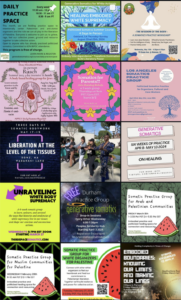Our Strategy
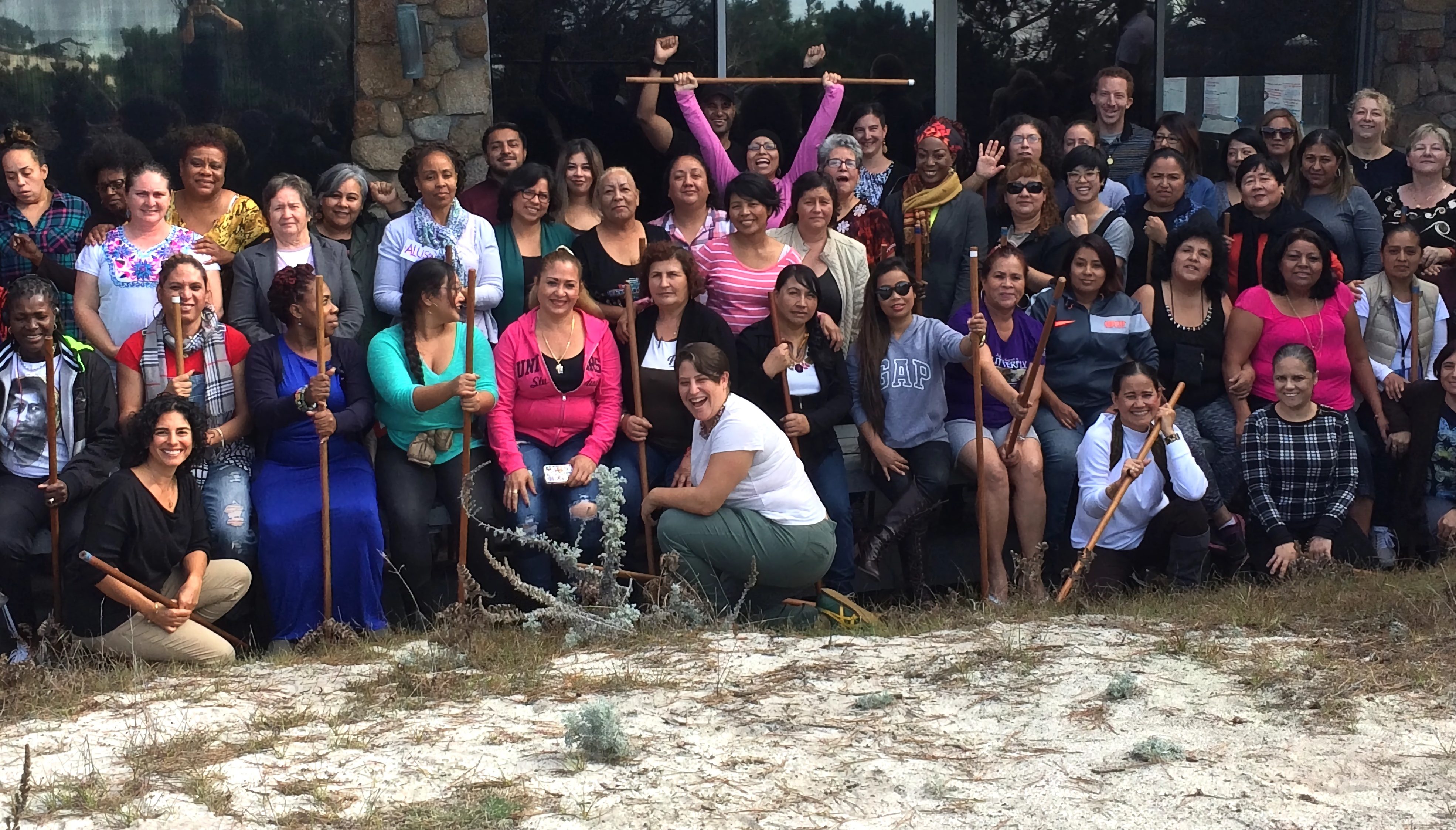
We believe that individual, collective, and systemic transformation are interdependent—and while they can be furthered by themselves, they are uniquely powerful when held together.
Strategic Priorities
It is critical for gs to identify strategic priorities. We are committed to making a transformative and measurable impact in this period that can then grow and deepen over time. Through work with our Strategy Team, we have arrived at the following priorities to guide us. You can read our full Strategic Priorities summary here.
We will prioritize and hone our efforts to partner with leaders, organizations, and alliances in these issue areas:
1. Freedom from Political Repression and State Violence | view more
2. Environmental and Climate Justice | view more
We will continue to prioritize building the power of leaders and formations organizing poor and working class communities of color. | view more
We are prioritizing these struggles for multiple reasons. | view more
We will continue to develop our shared political analysis in this coming period. | view more
Desired Impact: Five Embodied Skills & Competencies
Our goal is to produce the following five embodied skills and competencies in individuals, teams, and formations that will concretely magnify the power of our participants and Movement Partners.
Select an impact here.
Commitment
Individuals and groups will be able to return to a positive vision and act from their values under pressure; to identify what they care about and make it known to others
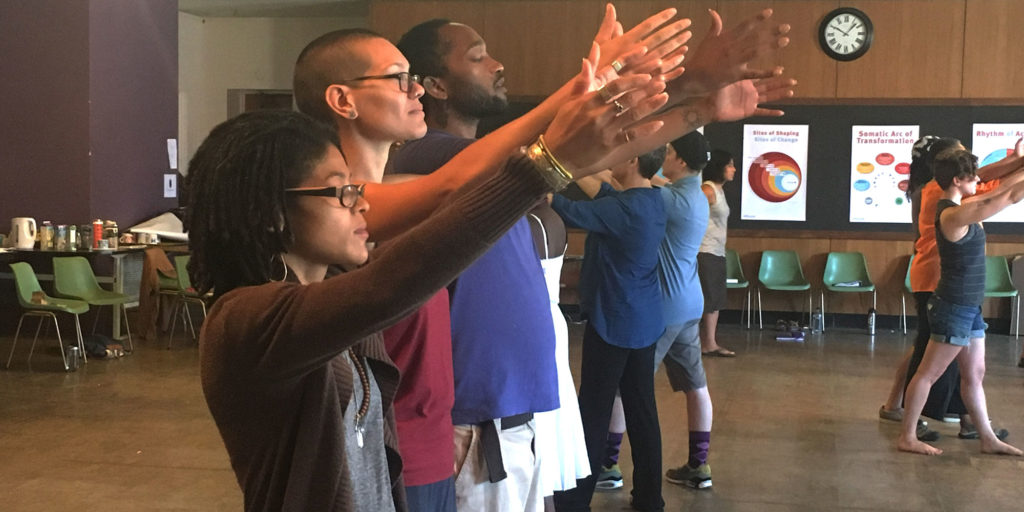
Connection
Individuals and groups will be able to form and sustain trusting, authentic relationships, compel others, and be a supportive presence amidst difficulty. They will be able to give and receive grounded feedback, informed by an awareness of how we have been individually and collectively shaped by trauma and oppression.
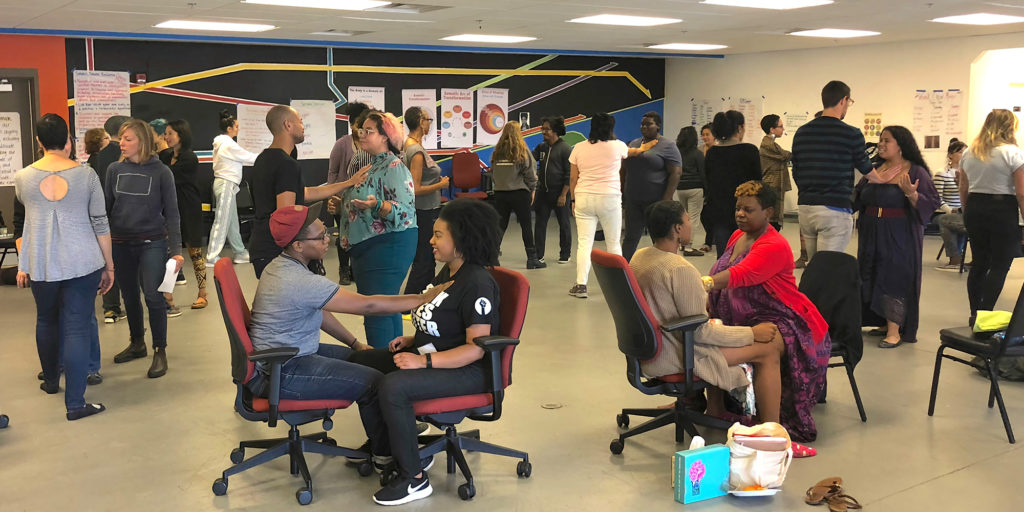
Coordination
Individuals and groups will be able to effectively collaborate with others in teams, partnerships, alliances, and remain responsive to evolving conditions.
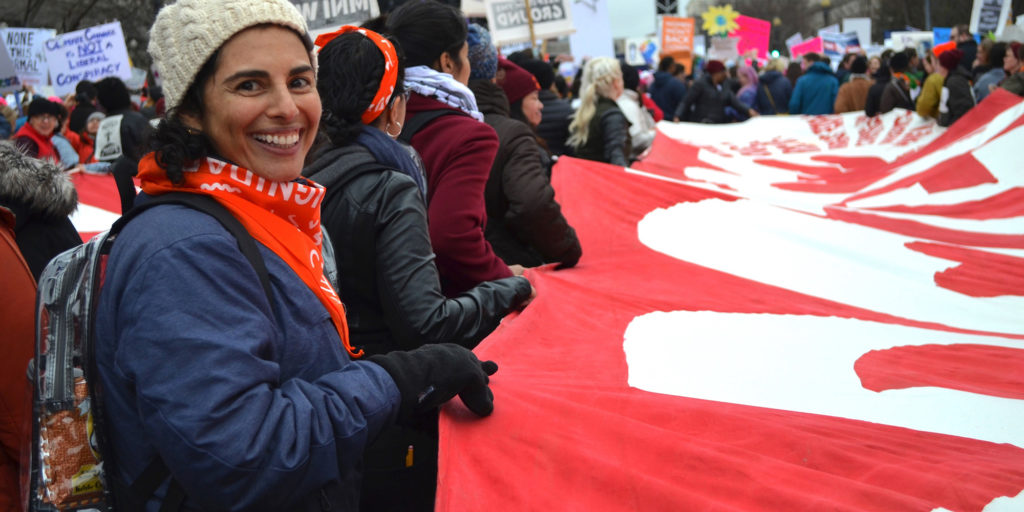
Collective Action
Individuals and groups will be able to take powerful, life-affirming actions with others rooted in shared values and vision, through clear and compelling requests, declines, promises, celebration, and evaluation.
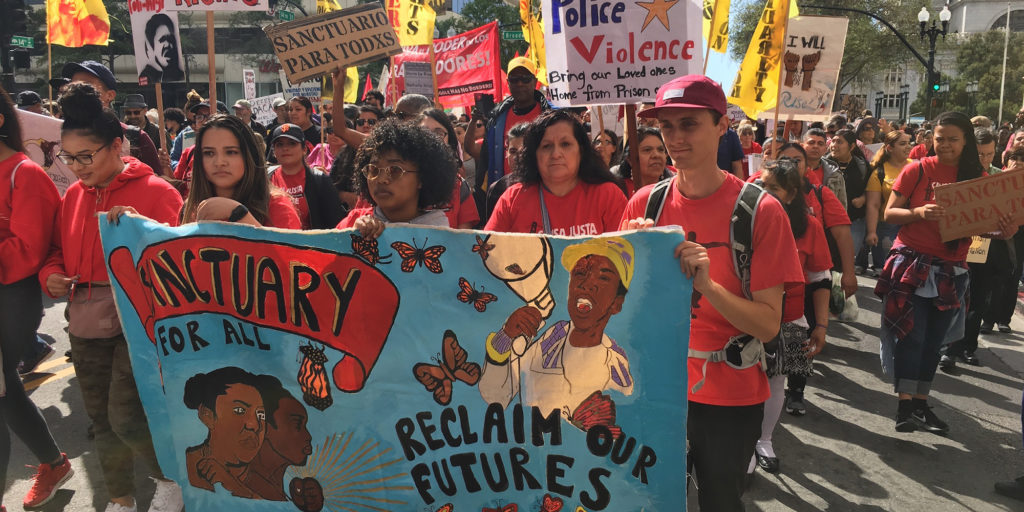
Conflict as Generative
Individuals and groups will be able to effectively engage and transform interpersonal and organizational breakdown and ask for and offer accountability and repair, in a way that generates more dignity and trust for everyone involved.

Four Impacts
The five embodied skills and competencies we aim to produce will strengthen our movements by having the following four impacts in organizing and movement building:
1. Campaigns and actions will be more powerful, life-giving and vision-driven in the face of ongoing repression, conflict, exploitation, and backlash.
2. Movements will organically contribute to the development of alternatives for responding to violence and emergencies in our communities in ways that do not engage the State. They will advance transformative justice—ways of addressing harm and violence that produce safety, healing, agency, and accountability while undermining and transforming oppressive systems and practices.
3. Organizational and movement culture will shift towards greater mutual belonging, dignity, and power, with an increased ability to hold complexity and address, heal, and transform internalized oppression and trauma.
4. Movements will more effectively grow and scale work across identity, worldview, and geography; and make the most strategic and bold contribution to the creation of a just, loving, and sustainable society.
Interested in learning more about our strategic priorities? Download our Strategic Priorities summary PDF here.
Why Somatics for Organizing, Movement Building, & Action?
Somatics is a practice-able theory of change that can move us toward individual, community, and collective liberation through working to embody transformation. Somatics with a social analysis understands the need for deep personal transformation, aligned with liberatory community/collective practices, connected to transformative systemic change. They are inextricable and support each other.
We define transformation as the ability to take new actions that are aligned with our visions and our values even under the same old pressures. It shows in our actions, ways of being, relating, and perceiving, both individually and collectively. Transformation is change that can sustain over time.
View MoreSomatics works through the body (individual and collective)—and engages our thinking, emotions, commitments, vision, and action. It is a resilience-based method that helps us change embodiment or ‘shape’ moving from reaction and increasing choice. It acknowledges the deep wisdom in our survival strategies and adaptations and offers many ways to transform what’s become automatic and no longer useful. This approach uses somatic awareness, somatic opening, and somatic practices as 3 key components of change.
In our current society, we have learned a more objectifying view of the body as a pile of bones and tendons that we think of like a science project. Instead, somatics looks at the body as a place of evolutionary intelligence and learning and as an essential place of change and transformation. You can think of it as muscles having memory and the tissues having intelligence that we can learn and draw from.
Somatics for organizing, movement-building, and action understands both the individual and collective as a combination of biological, evolutionary, emotional and psychological aspects, shaped by social and historical norms and adaptive to a wide array of both resilient and oppressive forces. All of this gets embodied through both resilience and survival strategies, and social and cultural practices become ‘shapes’ or embodied worldviews, habits, ways of relating, automatic actions and non-action. What we embody becomes familiar, ‘normal,’ and habitual, even ‘feels’ right…even when what we embody may not match up with our values or vision. Then, what we embody connects to our identity and how we see ourselves.
What Somatics Is Not
It is not the ‘body’ add-on to therapy or coaching; it is not any ‘body-based’ exercise, and it is not solely ‘bringing your attention to your bodily sensations.’ In the mainstream West, we fundamentally live in a disembodied set of cultural practices, and the distinctions around body-based work can get rather sloppy. Anything that has to do with the body can get called ‘somatics.’
View MoreAs current somatic approaches are being institutionalized within Western psycho-therapeutic traditions and university departments, you will find that most schools do not include the social conditions in which we live. A somatic approach without a political analysis of social institutions, unequal distribution of power, and use of violence and force, leave out some of the largest forces that shape us. Without a political analysis, much of the trauma that folks withstand is either left unnamed (racism, gender oppression, homophobia, class oppression) or only partially addressed. A somatics with a social analysis can act as a fundamental collective practice of building power, deepening presence and capacity, and developing the embodied skills we need to generate large-scale change. Without a political analysis, this doesn’t get leveraged.Somatic Theory
Select a button below to learn more.
Arc of Transformation
To transform, to create embodied change, somatics starts with the question of commitment. Who and what is important to you? What’s your vision? What do you long for? What future do you want to build? Then we explore our habits, automatic reactions, and embodied survival strategies. We begin to feel and perceive our individual and collective “current shapes”. At this phase in the Arc we also explore our resilience, and how to make it a purposeful practice.
Next, in somatic opening, we get to change and deconstruct the embodied patterns that no longer serve us. Through opening, we are often healing wounds and developing more capacity to feel and to be skillful amidst feeling and change. Somatic opening is the pragmatic process of deep transformation, shedding to change.
Somatics then moves us toward embodying new ways of being and action that align our values, longings, and actions. Often our social conditions and our family and community experiences do not teach us the embodied skills we need. This focus on developing embodied skills, whether it’s centered accountability and liberatory use of power, building deeper trust through conflict, or the capacity to be with the unknown or love more deeply, is essential to sustainable change.
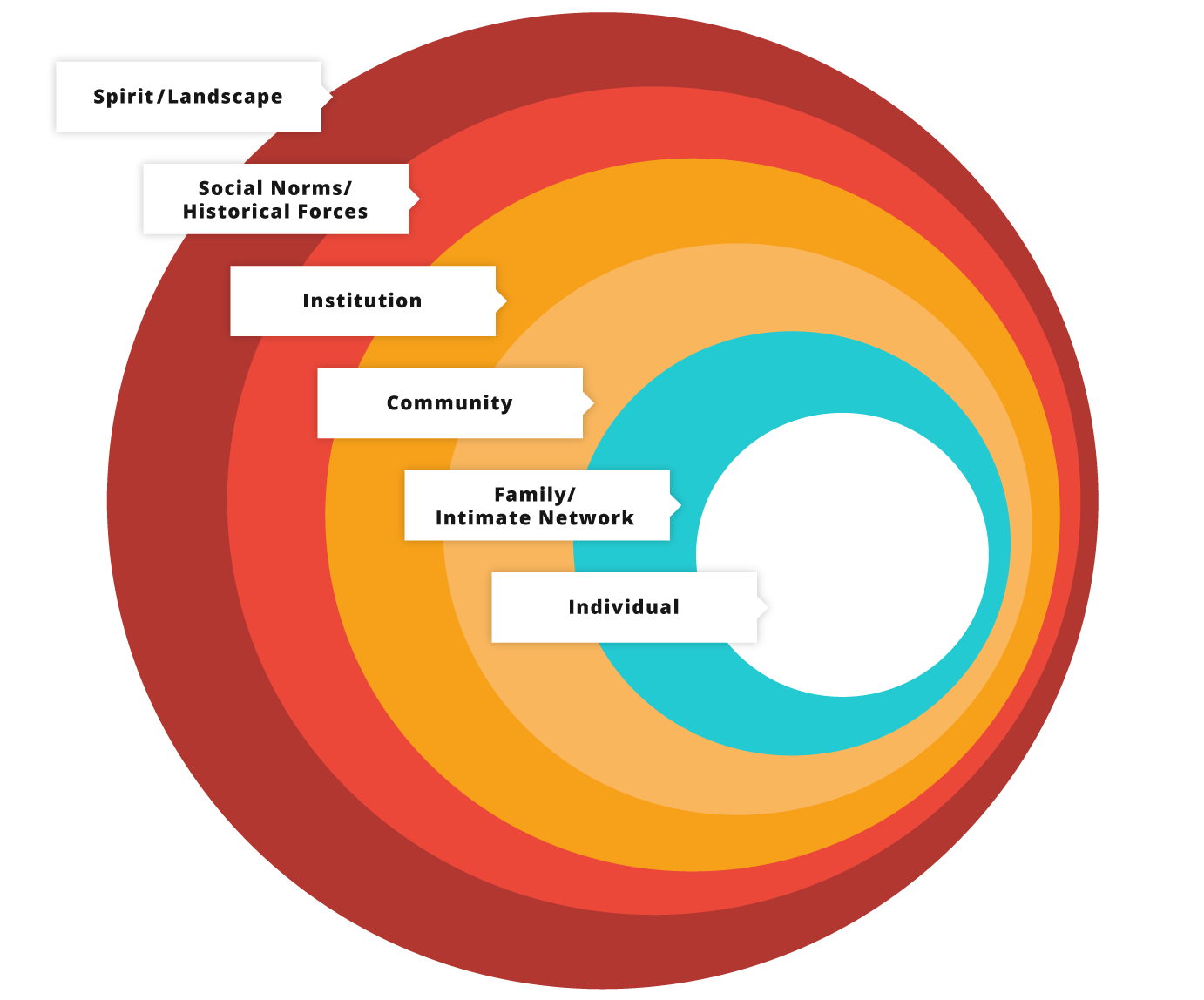
Sites of Shaping & Change
Sites of Shaping and Change helps us to understand the many experiences and forces that affect us. It also helps us see how interactive these Sites are. The bad news, from a social justice perspective, is that we inadvertently embody societal norms we don’t believe in, and often don’t embody the values we believe in. From a politicized somatics vantage point, this is completely understandable and there is a lot we can do about it. We are shaped by all of these Sites, and also have the power to shape them. The larger the circle, the more people and power it takes to transform the Site. All these Sites are interconnected, with social norms, culture, and the economy expressing through each one.
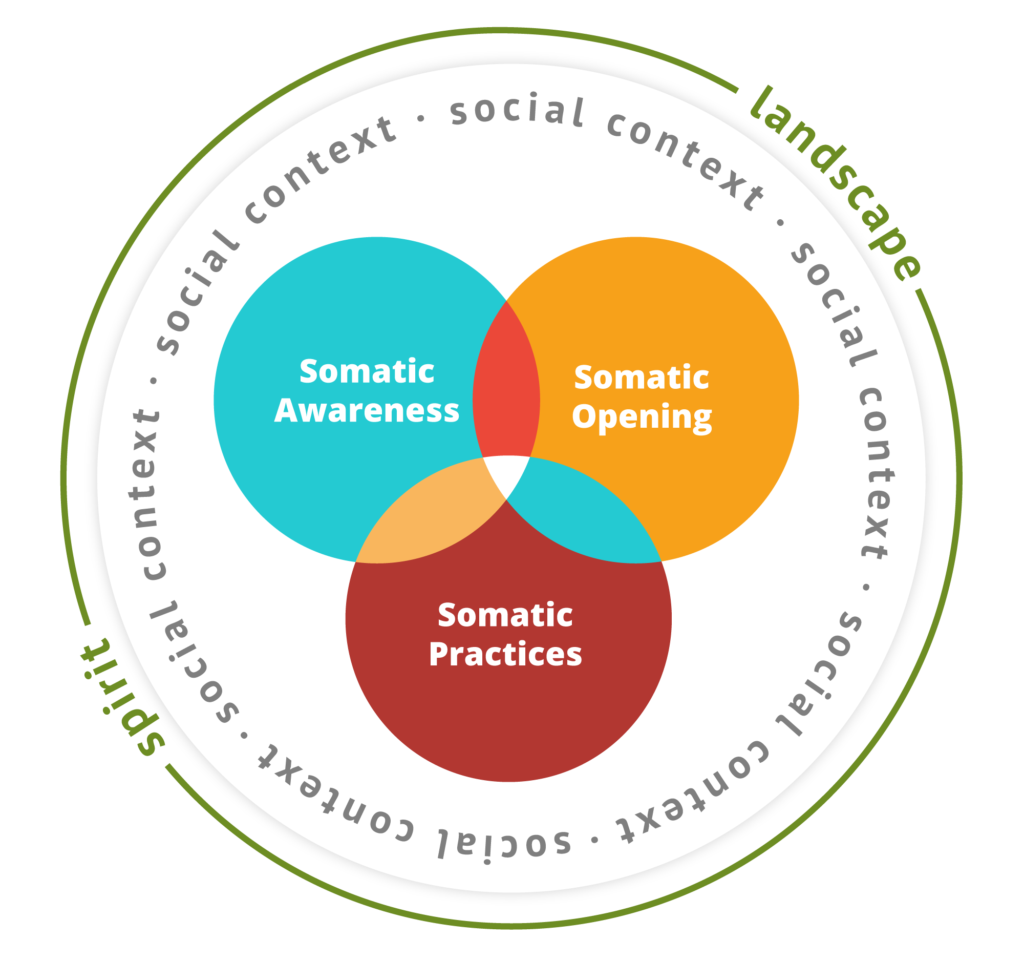
Somatic Awareness, Practices, & Opening
This graphic helps us to understand the various aspects of somatic transformation. Somatic Awareness develops our ability to feel and work with sensation, emotions, and aliveness in the felt senses. We learn to come ‘back into our bodies’ and live inside of our own skin, recognizing the information and wisdom there. We become more aware of others’ aliveness and feeling as well. Somatic Practices help us develop new skills that we can act on, making sure they don’t remain just a good idea. Through practice, we train new skills into our nervous systems so that we have these as a choice, even under pressure. New practices can include; centered boundaries, consent, requests, making offers/ proposals, somatic assessments, and more. Somatic Opening is deconstructing embodied habits and getting to heal and attend to what they have been taking care of. This makes spaces for a new practice to deepen and root. The broader circles of Social Context and Landscape/Spirit acknowledge the context and conditions in which all transformation is happening, and must be addressed in all levels of change.
“Initially I was skeptical of somatics. I was concerned it might just be some hokey New Age thing, some bland and typical Orientalist American appropriation of healing modalities from around the world. I really got hooked when I realized how deep, pragmatic and effective somatics was, how it acknowledged its syncretic and at times yes appropriative lineage, but leveraged these for change rather than being stuck and made small by those contradictions.”
– Sumitra Rajkumar, gs teacher + practitioner (Psychology Today, 2019)
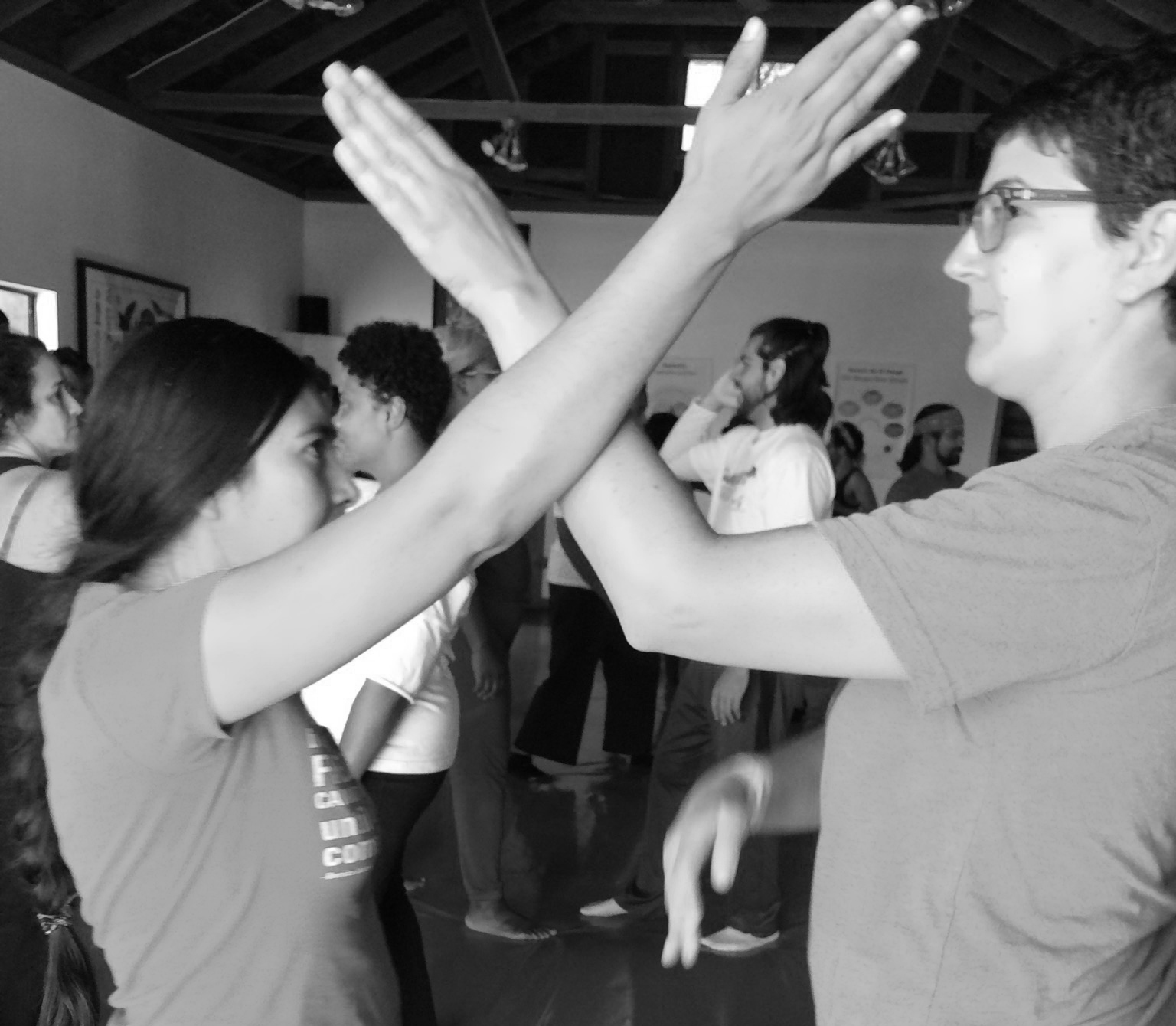
Our Lineage
We acknowledge that there have been contributions and innovations from many people and many methodologies along the way—some that are more visible than others—all of them are a part of that lineage.
We also acknowledge that our lineage has developed in the context of colonization, slavery, gender oppression, class oppression, and systemic inequity. These histories and forces are a part of the gs lineage, our lives, and the current historical moment.
Our commitment is to continue to discover and hold the lineage’s contradictions honestly and with complexity, and practice inside of our lineage for deep personal, community, and systemic transformation. We see this as a work in progress: alive, growing, and evolving.
We are working on a new piece on Decolonizing our Lineage and will post that here when it’s ready.
